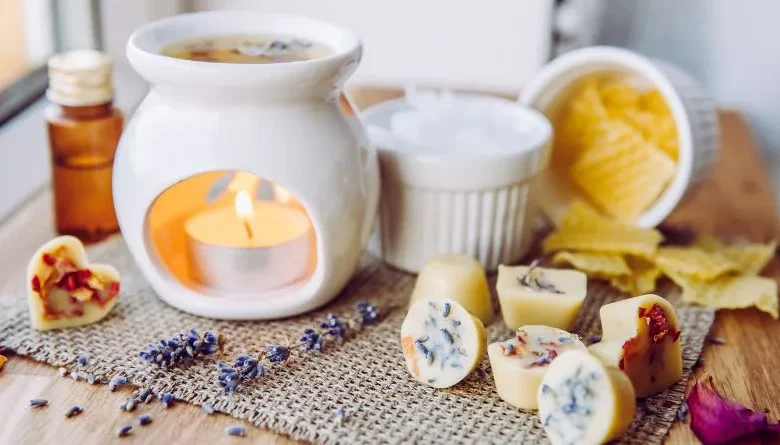Finally Showing You How Do Wax Melts Work

Wax melts are a delightfully simple way to fill your home with wonderful fragrances. But for new users, questions often arise around exactly how they produce scent. As a supplier of artisan wax melts, I’m here to provide a thorough yet easy-to-understand explanation of exactly how wax melts work.
What are wax melts made of?
The base component of all wax melts is paraffin wax. This is blended with essential or fragrance oils to imbue it with different scents. For premium melts, soy wax or coconut wax may replace some paraffin for a more natural formula. Coloring is added for aesthetic purposes but does not impact function. The wax is then molded or pressed into various shapes.
How do they produce scent?
Wax melts release their fragrance through a process called sublimation. As the melts are heated in a warmer, the wax changes phases and the perfume molecules are released as an aromatic gas or vapor into the surrounding air. The warmer provides just enough indirect, low-level heat to cause this phase transition of the wax without burning or smoking.
Which Kind of Wax Melt Should I Use?
Three common types of wax warmers exist – Electric Wax Warmers, Tea Light Wax Warmers, and Light Bulb Wax Warmers for oil diffusers. Electric warmers simply require placing melts onto a heated plate. Tea light models use a tea light candle beneath a perforated tin to warm melts above. Oil diffuser warmers drop wax melts into the water reservoir housing essential oils.
Placement and Usage Tips:
For best results, locate warmers in well-trafficked central rooms. Smaller rooms may require fewer melts. Avoid drafts, direct sun or excessive heat which can cause smoking. Periodically rotating melts ensures even melting. Most quality melts will each provide 4-8 hours of fragrance depending on room size before fully melting.
Combining Scents:
With wax melts, you have infinite options to create layered, complex homemade fragrance combinations. Mixing a bright top note with a rich base note is a good starting point. Experiment blending floral, fruit, woods or spice scents. Personal taste should guide you.
Troubleshooting and Tips:
If scent throw seems low, ensure the warmer heat level is adequate and there is nothing blocking airflow around the warmer. For weak melts, use more at once or try warmer brands. Clean warmers regularly using soft cloth to buff off wax residue keeping them performing optimally. With proper use, wax melts will provide many joyous hours of scent changing as desired for each room.
Safety Considerations:
While perfectly safe when used correctly, there are some precautions with wax melts. Keep warmers and melted wax far from open flames or lit candles. Never leave running warmers unattended and ensure units are level to avoid spilling. As with any heat source, place warmers on firm, heat-resistant, non-flammable surfaces away from edges. Monitor children and pets for safety. Blow out tealight flames before wax is fully melted.
Fragrance Types:
The variety of wax melt scents is vast! Florals range from light rose or lavender to rich jasmine. Popular fruits include apple, mango, watermelon. Spices like vanilla, cinnamon or pumpkin pie add warmth. Woodsy notes involve sandalwood, mahogany or cedar. And seasonal collections let you set the mood year-round.
Customizable Options:
For truly personalized touches, some artisan makers allow building your own custom fragrance profiles or monogramming melts. Others offer pretty melt tin or warmer prints to match any décor. Special event collections let you infuse parties with themed scents like wedding cake or birthday sparkles too!
Health Benefits?
While not a replacement for essential oils, some claim certain wax melt scents can promote well-being. Citrus and floral top notes may naturally uplift mood. Spicy or woodsy bases are said to induce calm and relaxation. However, like any scent product, individual reactions will vary. Consult a doctor if concerned.
Sustainability Focus:
Leading brands strive for greener practices in wax melt production. Soy and coconut wax choices provide plant-based alternatives to petroleum-based paraffin. Many use recycled or FSC certified packaging materials. Fragrance natural or synthetically derived is clearly noted. Some initiatives even offset carbon footprints through tree planting. Consumers can feel good choosing eco-friendly options!
Storage Tips
Properly storing unused wax melts helps maintain their fragrance quality. I recommend keeping them in a cool, dry place away from direct sunlight which can accelerate fragrance loss. Airtight containers or Ziploc bags prevent exposure to air and moisture. Stack melts gently to avoid cracking or damage. For melts in seasonally themed tins, storing the tin lid loosely helps release any trapped scents to keep them fresh for future use.
Reheating Melts
If you notice wax melts have hardened inside the warmer, you can safely reheat them to restore fragrance throw. Simply turn the warmer back on at its lowest heat setting for 30-60 minutes until the wax is fully liquefied again. Never microwave hardened wax as it could overheat unevenly and pose a burn risk. Direct low heat is the gentlest method.
Making Your Own
Creating customized wax melts at home is fun and cost-effective! Essential oil blends, wax pouring templates in favored shapes, and individual or bulk warmer cups can be sourced online. Basic melting and blending techniques involve slowly heating wax pads in the microwave and stirring in desired fragrance levels. Cooling and storing homemade melts follows the same guidance as store-bought.
Travel Friendly Options
For enjoying wax scents on the go, portable single-use cubettes or melt clamshells are convenient. These insert directly into mini travel warmers running on battery or USB. Some scented wax tarts are also designed for use in oil diffuser necklaces worn as fragranced jewelry. These creative products satisfy the urge for cozy scents anywhere life takes you.
Conclusion:
The article provides an overview of wax melts, explaining that they are made of paraffin wax mixed with essential or fragrance oils. The melts release scent through a process called sublimation when heated in a warmer. It outlines three types of wax warmers, offers tips for placement and usage, discusses combining scents, troubleshoots common issues, and emphasizes safety considerations. The variety of available scents is highlighted, along with customizable options and potential health benefits. The article touches on sustainability efforts in wax melt production and provides storage tips. It also mentions reheating options, making wax melts at home, and travel-friendly alternatives. The overall tone encourages readers to explore and enjoy the world of wax melts.
I hope this comprehensive guide to how wax melts work and their many variations has you excited to try these sublime home fragrance tools. Please let me know if any part of the process remains unclear or if you need help selecting your first melts. I’m always happy to assist new enthusiasts in enjoying this simple scent-enhancing hobby!


